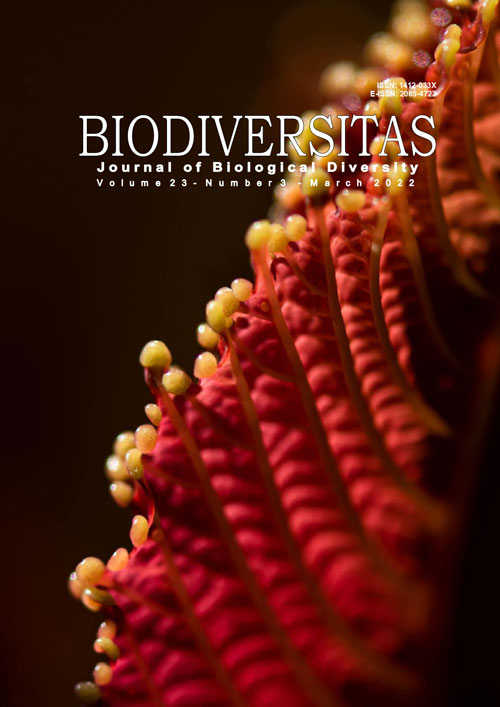Molecular identification of cellulase-producing thermophilic fungi isolated from Sungai Pinang hot spring, Riau Province, Indonesia
##plugins.themes.bootstrap3.article.main##
Abstract
Abstract. Saryono, Novianty R, Suraya N, Piska F, Devi S, Pratiwi NW, Ardhi A. 2022. Molecular identification of cellulase-producing thermophilic fungi isolated from Sungai Pinang hot spring, Riau Province, Indonesia. Biodiversitas 23: 1457-1465. Thermostable cellulolytic enzymes have become a subject of interest in industrial processes due to their ability to degrade cellulosic polysaccharides at elevated temperatures produced by microorganisms such as fungi and bacteria. In the present study, cellulase-producing thermophilic fungi were isolated and identified from Sungai Pinang hot spring, Riau Province, Indonesia. Morphological identification was carried out by macroscopic and microscopic observations. The ability of the thermophilic fungi to produce cellulase was determined using the clear zone test on carboxymethyl cellulose medium with a congo red staining. Isolate with the highest activity was identified molecularly using universal primers ITS1F and ITS4R. The results showed 19 isolates were morphologically identified as Aspergillus sp. and Penicillium sp. Based on qualitative testing, 3 of the19 isolates showed cellulase activity. The isolate performing the most considerable cellulase was LBKURCC293, which was identified as Aspergillus fumigatus with a cellulase activity of 2.6 x 10-2 IU/mL and a specific cellulase activity 8.0 x 10-3 IU/mg protein after 96 days of incubation.

